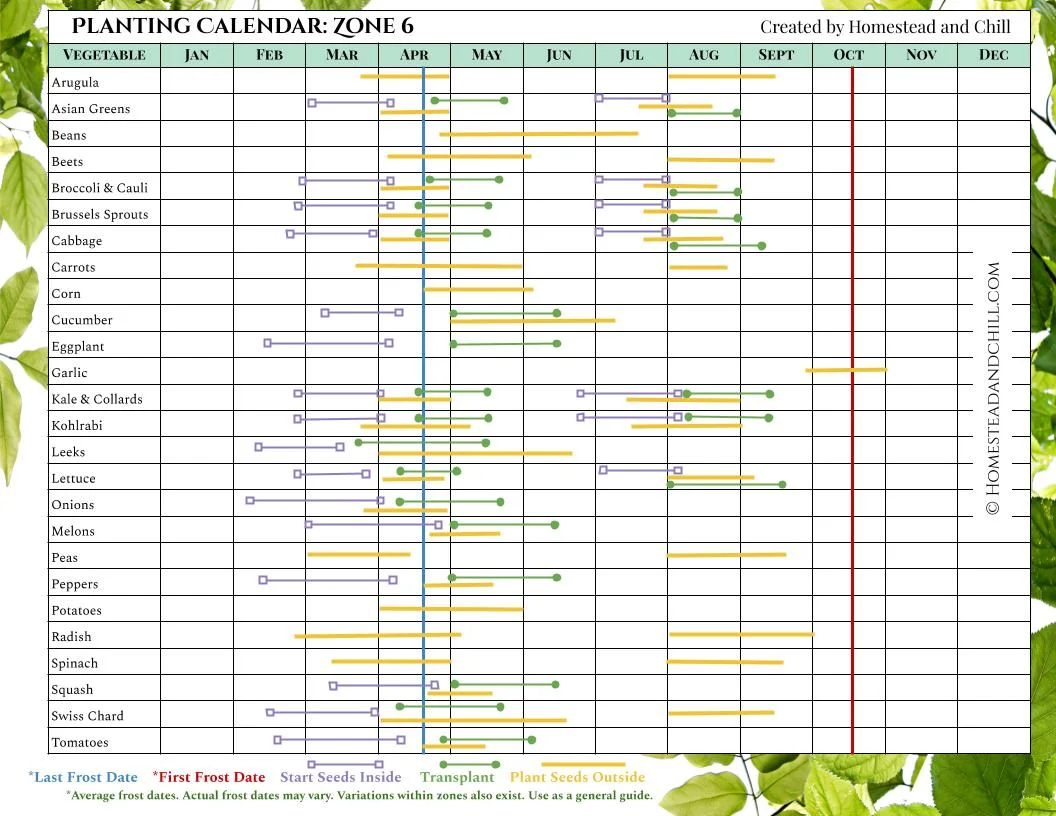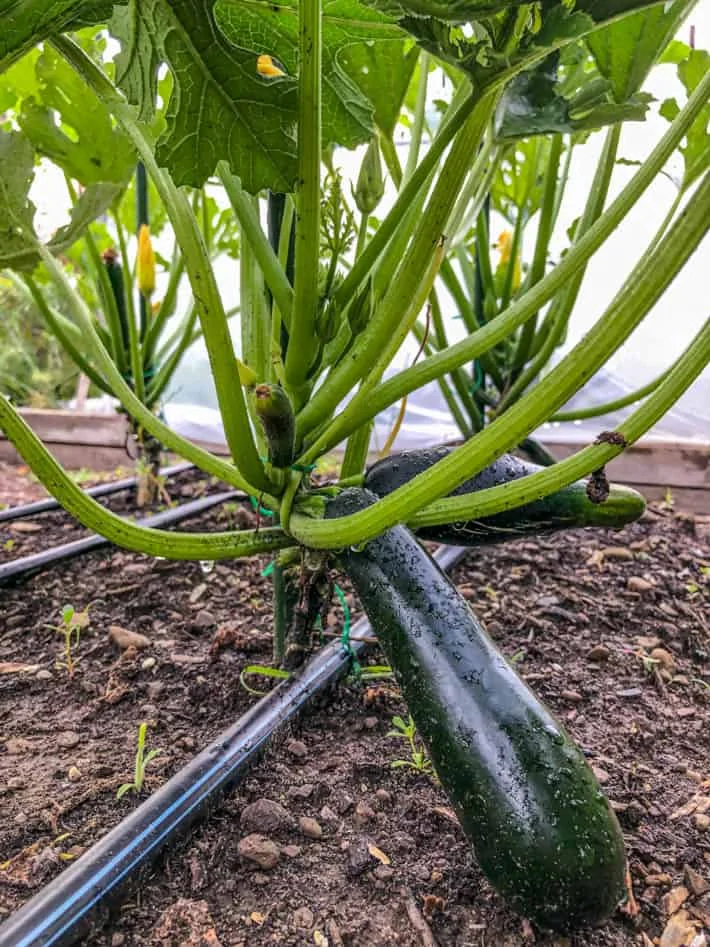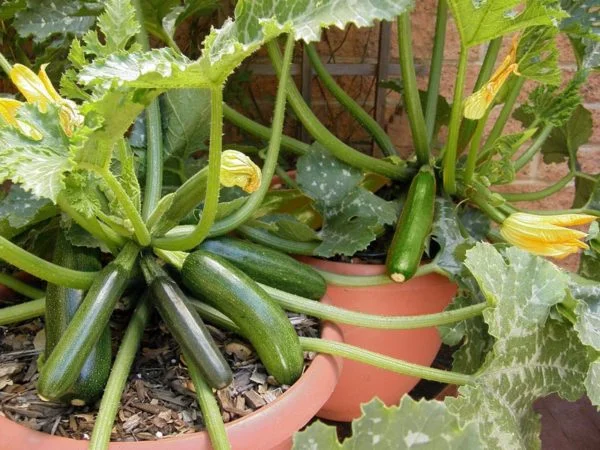Are you eager to know the perfect timing to plant zucchini in Zone 6? Look no further! In this article “When To Plant Zucchini In zone 6?”, we will reveal the ideal time to sow your zucchini seeds, ensuring a bountiful harvest in this specific region. Whether you’re a seasoned gardener or a beginner, we’ve got you covered with valuable insights and helpful tips. So let’s get started and uncover the secrets to successful zucchini planting in Zone 6!
Factors to Consider in Planting Zucchini
Climate in Zone 6
When planting zucchini in Zone 6, it is important to consider the climate of the region. Zone 6 has a moderately cold climate with average minimum temperatures ranging from -10°F (-23°C) to 0°F (-18°C). It is essential to choose zucchini varieties that are tolerant of colder temperatures and can thrive in this climate. However, it is also important to note that zucchini is a warm-season vegetable and requires a certain amount of heat to grow properly. Therefore, it is crucial to find a balance and choose zucchini varieties that can withstand the cold while still thriving in warmer temperatures.
Soil Conditions
The soil conditions in which you plant your zucchini can greatly affect the growth and productivity of the plants. Zucchini thrives in well-draining soil that is rich in organic matter. Before planting, it is recommended to conduct a soil test to determine the pH level and nutrient content of the soil. Zucchini prefers slightly acidic to neutral soil, ideally with a pH level between 6 and 7. Adjustments to the soil’s pH can be made by adding amendments such as lime or sulfur. Additionally, the soil should be amended with compost or well-rotted manure to improve its fertility and structure.
Frost Dates
Frost dates play a crucial role in determining the best time to plant zucchini in Zone 6. Zucchini is highly sensitive to frost and will not survive if exposed to freezing temperatures. The average last spring frost date in Zone 6 is typically around mid-April to early May, while the first fall frost date usually occurs in late September to early October. It is important to wait until after the last frost date before planting zucchini seeds directly in the garden or transplanting seedlings. Starting zucchini seeds indoors prior to the last frost date can give the plants a head start and ensure a successful harvest.
Choosing the Right Zucchini Variety
Determining Preferred Varieties
There is a wide range of zucchini varieties available, each with its own unique characteristics and flavor profiles. When choosing a zucchini variety for planting, it is important to consider your preferred taste, texture, and color. Some popular zucchini varieties include ‘Black Beauty’ (dark green skin), ‘Costata Romanesco’ (ribbed skin), and ‘Yellow Crookneck’ (yellow skin). It is recommended to consult local nurseries or gardening experts to determine which varieties are best suited for the specific growing conditions in Zone 6.
Considering Days to Maturity
Days to maturity is an important factor to consider when choosing a zucchini variety. This refers to the average number of days it takes for the plants to reach maturity and start producing fruits. In Zone 6, where the growing season is relatively shorter, it is advantageous to select zucchini varieties with a shorter maturity period. Early-maturing varieties can ensure a successful harvest before the onset of the fall frost. Look for zucchini varieties that have a days to maturity range of 45 to 55 days for optimal results in Zone 6.
Preparing the Soil for Planting
Soil Testing
Before planting zucchini, it is highly recommended to conduct a soil test to evaluate the current condition of the soil. A soil test will provide valuable information about the pH level, nutrient content, and organic matter content of the soil. This information can help you determine if any amendments are necessary to create the optimal growing conditions for zucchini. Soil testing kits are widely available and can be purchased at garden centers or through online retailers. Follow the instructions provided with the kit to collect a soil sample and send it to a reputable soil testing lab for analysis.
Amending the Soil
Based on the results of the soil test, you may need to amend the soil to ensure that it is suitable for zucchini cultivation. If the pH level of the soil is too acidic (below 6), you can add lime to raise the pH. On the other hand, if the soil is too alkaline (above 7), you can add elemental sulfur to lower the pH. Additionally, it is important to incorporate organic matter into the soil to improve its fertility and structure. Compost, well-rotted manure, or other organic amendments can be mixed into the soil to increase its nutrient content and moisture-holding capacity.
Preparing the Soil Beds
To prepare the soil beds for planting zucchini, start by removing any weeds or grass from the area. This can be done by manually pulling them out or using a garden tool such as a hoe or a rake. Next, loosen the soil to a depth of around 8 to 10 inches (20 to 25 cm) using a garden fork or a tiller. This will help improve aeration and drainage in the soil. If necessary, incorporate any recommended amendments based on the soil test results. Finally, smooth the soil surface using a rake to create a level planting bed for the zucchini seeds or seedlings.

Starting Zucchini Seeds Indoors
Determining the Optimal Time for Indoor Sowing
Starting zucchini seeds indoors can give the plants a head start and ensure an early harvest. The optimal time for indoor sowing is typically 4 to 6 weeks before the last expected frost date. In Zone 6, this usually falls in late February to early March. By starting the seeds indoors during this period, the young seedlings will have sufficient time to grow and develop before being transplanted outdoors after the last frost.
Gathering the Necessary Supplies
Before sowing zucchini seeds indoors, gather all the necessary supplies. You will need high-quality zucchini seeds, seed-starting trays or pots, a seed-starting mix, a spray bottle for watering, and clear plastic covers or plastic wrap for creating a mini greenhouse effect. Seed-starting trays or pots should have drainage holes at the bottom to prevent waterlogging. The seed-starting mix should be well-draining and lightweight to promote healthy root growth.
Sowing the Seeds
Fill the seed-starting trays or pots with the seed-starting mix, leaving a small gap at the top for watering. Moisten the mix with water until it is evenly damp but not soaking wet. Following the instructions on the seed packet, sow the zucchini seeds at a depth of around 1 inch (2.5 cm). Gently press the seeds into the soil and cover them with a thin layer of the seed-starting mix.
Mist the soil surface with water using a spray bottle to ensure proper moisture. Place clear plastic covers or plastic wrap over the trays or pots to create a mini greenhouse effect and retain moisture. Keep the seeds in a warm location, ideally around 75°F (24°C), and provide sufficient light for germination.
Direct Sowing Zucchini Seeds in the Garden
Determining the Appropriate Outdoor Planting Time
If you prefer to sow zucchini seeds directly in the garden, it is important to wait until after the last spring frost date before doing so. Zucchini seeds require warm soil temperatures of at least 60°F (15°C) for successful germination. In Zone 6, the soil typically reaches this temperature in late spring, after the risk of frost has passed and the weather has warmed up. Planting zucchini seeds too early in cold soil can result in poor germination and the loss of seedlings.
Preparing the Seedbed
To prepare the seedbed for direct sowing, start by clearing the area of any weeds, grass, or debris. Loosen the soil to a depth of around 8 to 10 inches (20 to 25 cm) using a garden fork or a tiller. This will help improve soil aeration and drainage. If the soil is compacted or heavy clay, adding organic matter such as compost or well-rotted manure can help improve its structure and fertility. Rake the soil surface to create a level planting bed, free of clumps or large stones.
Planting the Seeds
Following the spacing guidelines provided on the seed packet, sow the zucchini seeds directly into the prepared seedbed. Make small furrows, around 1 inch (2.5 cm) deep, using a garden trowel or your finger. Space the seeds according to the recommended distance to allow sufficient room for the plants to grow and spread. Cover the seeds with soil, gently firming it down to ensure good seed-to-soil contact. Water the seedbed thoroughly but carefully to avoid washing away the seeds. Provide regular moisture to the soil during the germination and seedling stages.
Caring for Zucchini Plants
Watering
Proper watering is essential for the healthy growth and development of zucchini plants. Zucchini requires consistent moisture to thrive, especially during hot and dry periods. Water the plants deeply and regularly, providing around 1 inch (2.5 cm) of water per week. It is best to water at the base of the plants to avoid wetting the foliage, as this can promote the growth of fungal diseases. Mulching around the plants can help conserve moisture and regulate soil temperature. Monitor the soil moisture levels regularly and adjust the watering schedule as needed.
Providing Sufficient Sunlight
Zucchini plants require ample sunlight to flourish and produce an abundant harvest. They thrive in full sun, which is defined as at least 6 to 8 hours of direct sunlight per day. Choose a location in your garden that receives the maximum amount of sunlight. If your garden is partially shaded, position the zucchini plants in an area that receives the most sunlight throughout the day. If growing zucchini in containers or raised beds, ensure they are placed in a sunny spot on your patio or balcony.
Fertilizing
To promote healthy growth and maximize productivity, zucchini plants benefit from regular fertilization. Before planting, incorporate well-rotted compost or organic matter into the soil to provide a nutrient-rich environment. Additionally, applying a balanced granular fertilizer, such as a 10-10-10 NPK (nitrogen, phosphorus, and potassium) formula, during the early stages of growth can boost the plant’s nutrient uptake. Follow the manufacturer’s instructions for the specific application rate, and avoid over-fertilization, as excessive nitrogen can result in lush foliage growth at the expense of fruit production.

Protecting Zucchini Plants from Pests and Diseases
Common Pests
Zucchini plants are susceptible to various pests that can cause damage to the foliage and fruits. Common pests that can affect zucchini include squash bugs, cucumber beetles, aphids, and vine borers. These pests can feed on the leaves, stems, and fruits, resulting in stunted growth, wilting, and reduced yield. Regularly inspect the plants for signs of pest infestation, such as chewed leaves or small insects, and take appropriate measures to control them. Natural remedies like insecticidal soaps, neem oil, or homemade organic sprays can be effective in deterring pests without harming the plants or the environment.
Common Diseases
Zucchini plants are susceptible to various diseases, including powdery mildew, bacterial wilt, and blossom end rot. Powdery mildew is a fungal disease that appears as a white powdery coating on the leaves, reducing their photosynthetic capacity. Bacterial wilt causes wilting and yellowing of the leaves, leading to plant decline. Blossom end rot is a physiological disorder characterized by a dark, sunken spot at the blossom end of the fruit. To prevent these diseases, it is important to maintain good airflow around the plants, avoid overhead watering, and promptly remove any infected leaves or fruits. Applying appropriate fungicides or bactericides can also be beneficial in controlling these diseases.
Preventive Measures
To minimize the risk of pests and diseases, it is important to implement preventive measures and maintain good garden hygiene. Rotate the location of your zucchini plants each year to reduce the buildup of pests and diseases in the soil. Clear away any fallen leaves, fruits, or plant debris from the garden beds to eliminate potential hiding places for pests and sources of infection. Regularly inspect the plants for early signs of pest infestation or disease development and take prompt action to prevent further spread. Additionally, practicing good weed control and providing adequate plant spacing can help improve air circulation and reduce the risk of disease.
Harvesting Zucchini
Identifying the Right Time for Harvesting
Knowing the right time to harvest zucchini is crucial to ensure optimal flavor and texture. Zucchini is typically ready for harvest when the fruits are around 6 to 8 inches (15 to 20 cm) in length and the skin is glossy and firm. Avoid allowing the fruits to grow too large, as they can become tough and less flavorful. Regular harvesting of zucchini also encourages continued fruit production. Use a sharp knife or pruning shears to cut the fruits from the plant, leaving a small stem attached. Harvesting zucchini regularly throughout the growing season will ensure a bountiful harvest.
Harvesting Techniques
When harvesting zucchini, take care not to damage the plants or neighboring fruits. Hold the fruit firmly in one hand and use the other hand to cut the stem carefully just above the fruit. Avoid twisting or pulling the fruits, as this can damage the plant and lead to fungal infections. Handle the harvested zucchini with care to prevent bruising or injury. If you have an excess of zucchini, consider sharing them with friends, family, or neighbors. Zucchini can also be preserved by freezing, pickling, or used in a variety of delicious recipes.

Conclusion
Planting and growing zucchini in Zone 6 requires careful consideration of various factors, including the climate, soil conditions, frost dates, zucchini variety selection, soil preparation, and proper care. By taking into account these essential factors and following the recommended guidelines, you can enjoy a successful zucchini harvest. Whether you prefer to start zucchini seeds indoors or sow them directly in the garden, with proper care, watering, and attention to pests and diseases, you can enjoy a bountiful harvest of fresh and delicious zucchini throughout the growing season. So roll up your sleeves, grab your gardening tools, and get ready to enjoy the satisfaction of growing your own zucchini in Zone 6.



